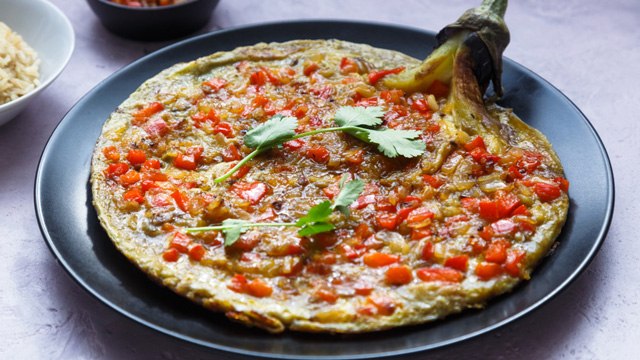Talong or the eggplant has long been considered a favorite vegetable in the palengke. It's one of the most common vegetables available, and it's even the main ingredient of the tortang talong, voted one of the top South East Asian food, second only to lumpiang Shanghai.
However, did you know that there are some facts about the talong that you may not know? For instance, did you know that you do not need to salt eggplants? Did you also know that the eggplant used to be considered poisonous and dangerous to eat?
In fact, you may think that you know how to prepare the talong but you might not after reading these myths. Read on to find out if you believe these myths about the eggplant to be true or if you know more about the talong than other people do:

Myth 1: Eggplants are bitter so salt them to draw out the bitterness.
Did you know that you do not need to salt the slim Chinese and Japanese eggplants that we commonly have available here in the Philippines? Unless the reason you're adding salt to these eggplants is to season the vegetable, it's fine to salt the eggplants. If you're salting it to remove the bitterness of the talong, you may be doing an extra step that is not even necessary because any bitterness in this variety of eggplant is minimal. It's the larger aubergine that may taste more bitter than these slimmer varieties.
Want to test whether you can taste the bitterness or not? Do this:
- 1 Prepare two slices of eggplant: salt and then rinse one slice and prepare one that isn't salted and rinsed.
- 2 Lightly fry each eggplant slice.
- 3 Give it a taste and see if you can detect the bitterness. If not, no need to add that extra step the next time you prepare talong! If you can (Are you a super taster?) you can continue to salt and rinse eggplants as previously instructed.
Another way to determine if you need to salt eggplants is the age of the eggplant. The older the eggplant, the more likely it will have some bitterness to it. That's why the smaller, younger eggplants will be more bitterness-free than the bigger, more mature vegetables.

Myth 2: Eggplants are vegetables.
Just like tomatoes are not vegetables, eggplants are not vegetables either. Because the eggplant develops from the flower of the plant, that makes it a fruit. Vegetables meanwhile develop from other parts of the plant such as the roots, the leaves, or the stems.
Why is there confusion about fruit and vegetables? It all stems from the fact that the edible eggplant is used as a vegetable ingredient instead of a fruit. Thus, the eggplant is considered a vegetable even if in the gardener's or farmer's point of view it is a fruit. (In fact, the eggplant is considered a very large berry.)

Myth 3: Eggplants are poisonous.
You might have heard that the eggplant might be poisonous and this is partly because the deadly nightshade, also known as belladonna, is considered deadly and poisonous. This plant is also in the same plant family as the eggplant, so the eggplant too was considered just as deadly at the time. We now know that's not the case, and that eggplants, just like tomatoes and potatoes which are also in the nightshade family, are all deliciously edible and safe to eat.

Myth 4: You need to peel eggplants before cooking.
The skin of the eggplant is actually edible and while there is no need to remove it before cooking, some cooks do prefer to remove it. One of the ways to do this is to char the skin, which is common practice when making a tortang talong recipe. Another way is to simply use a vegetable peeler and lightly remove the skin.
Once you have exposed the flesh of the eggplant, remember to work quickly before it turns brown or plunge the pieces into water with a little acid such as vinegar or citrus juice to stop the eggplant from oxidizing.

Myth 5: Eggplants that absorb water or too much oil will turn mushy.
Eggplants, when cooked, naturally turn mushy so it's not the fault of the eggplant (or you!) that it absorbed too much oil or water during cooking that made it so. Remember that the eggplant has a spongy texture so it will absorb liquids if you're not careful about the temperature of the oil or how much water you add.
What you can do to prevent it from absorbing too much oil? Here are some cooking tips you can try:
- 1 Use a nonstick pan and brush oil on the eggplant pieces just before frying.
- 2 Coat the eggplant in breading and lightly pan fry until just browned.
- 3 Lightly toss in oil, season with salt, and roast in the oven.
If your eggplants have absorbed too much oil, there is one thing you can do: place it on a paper towel or on a rack above a tray and heat it up again. The oil should drip out of the eggplant and into the paper towel. You can even pop it in your air fryer and let the air fryer do its thing!
Love eggplants? Here are more ideas on how to prepare it and recipes to try:
[ArticleReco:{"articles":["25791","21864","22725"]}]
***
